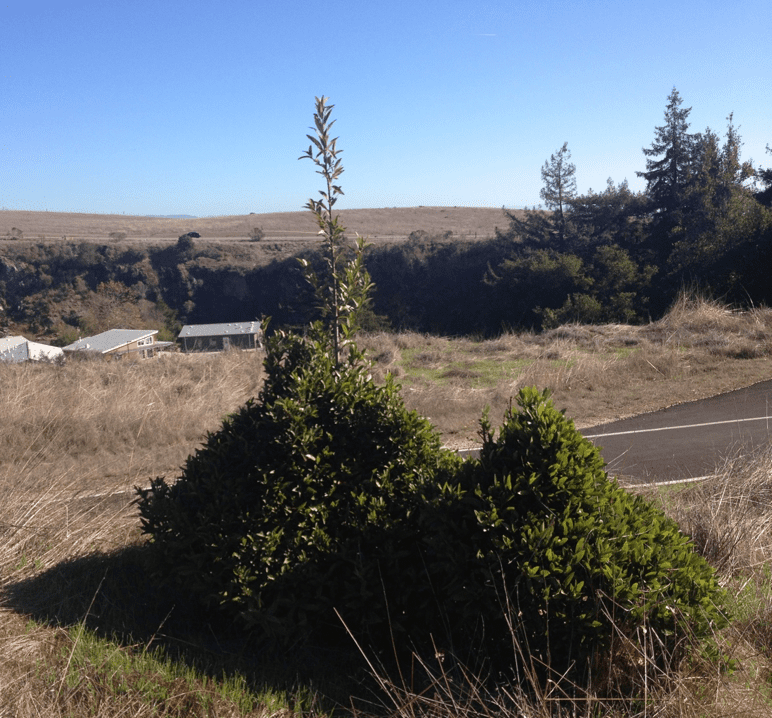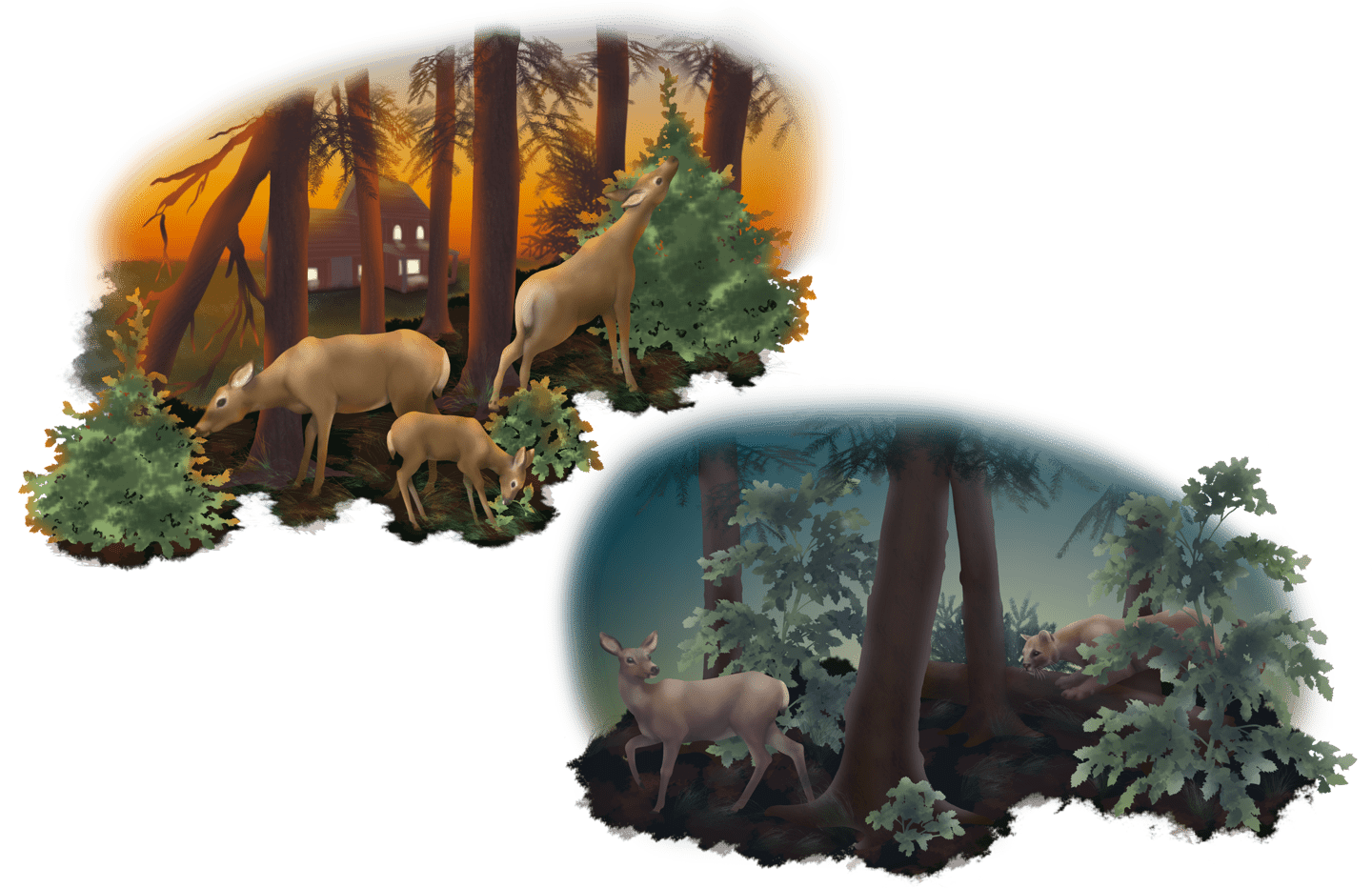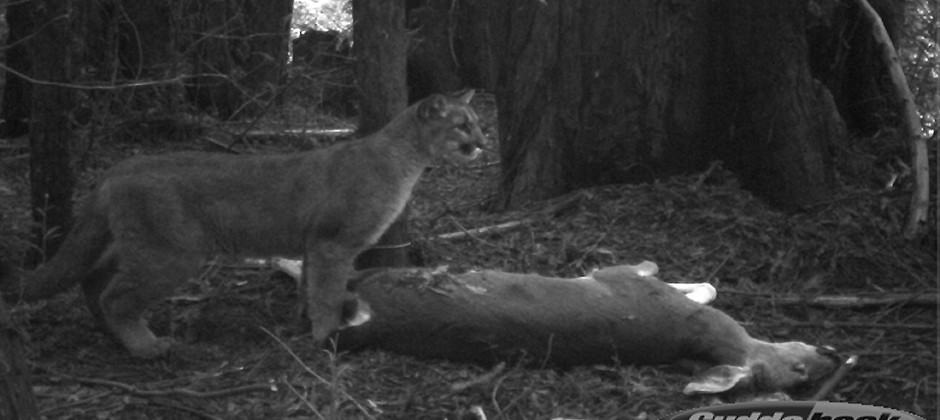Share this article
Puma presence impacts tree growth
Veronica Yovovich had always been curious about the shape of plants around her school campus. Many of the bay laurels close to the University of California, Santa Cruz, were shaped like pyramids, but they didn’t seem to be the focus of any landscaping efforts — not by humans at least.
One day she caught a glimpse of black-tailed deer (Odcoileus hemionus columbianus) browsing on the trees, and she realized they might be responsible.
“The deer were sort of sculpting these trees into these funny shapes,” said Yovovich, who was working on her PhD at the university at the time.
But not all bay laurels had the same shape. In fact, Yovovich, now a wildlife conflict specialist and conservation scientist at the global wild cat conservation organization Panthera, noticed that that the farther she got from developed parts of the campus, the less sculpted the plants seemed.

Plants browsed by deer have a characteristic pyramid shape. Credit: Veronica Yovovich
Yovovich began to wonder about the carnivores she studied — namely, cougars (Puma concolor). She and other researchers at the school had put about 100 GPS tracking collars on cats over several years that provided fine-scale data on how the cats moved and where they spent their time. Based on where the collared animals stopped for long periods, the researchers could deduce kill sites.
By modeling the data, Yovovich and her colleagues came up with a predation risk map in the Santa Cruz Mountains and set out trail cameras in both high- and low-predation risk areas. In a study published recently in Ecosphere, the team determined that deer were less likely to be taken down by mountain lions nearer areas with heavy human use.
“Human activities are the main driver determining the low-risk sites for deer,” Yovovich said, and that affected deer behavior. “They were utilizing areas closer to humans more than areas far from humans on a pretty small scale.”
Since the deer spent more time at these sites, they also ended up eating more, browsing on plants around the UC Santa Cruz campus, for example.
“There was relatively more deer activity near human development, resulting in heavier browsing on plants,” Yovovich said.
The researchers verified this by looking at tooth marks on plants.

An illustration contrasting plants browsed heavily by deer on the top left with the appearance of plants where cougars are more common. Credit: Corlis Schneider
“Deer took more bites from tanoak saplings growing in low-risk areas near people than from saplings growing in high-risk areas away from people,” she said.
Tanoaks, bay laurels, and other woody plants often respond to the snipping off of young branches by budding more, becoming bushier close to the ground rather than growing taller. It’s a defense response that can help protect the plant from herbivores in the long term.
“If you put out enough branches low down, they can exclude deer from being able to reach the primary stem in the center, which can then grow upright and become taller,” Yovovich said.
But in the short term, this response works well for the deer. Eating fresh buds makes the plants produce more of them. Plants in areas that see less deer activity, on the other hand, typically grow taller and thinner.
“The deer is cultivating its own browse,” Yovovich said. “If you take bites of your favorite food and it grows more food, that’s a really good deal.”
On a larger level, the study’s findings show some of the secondary effects humans can have on a food chain. “Mountain lions avoid people, and hunt deer in areas away from people more than around people as a general rule,” Yovovich said. “Even though we don’t hunt cougars in California, we are scary enough to change how they behave and how they hunt.”
Some deer have apparently cued into this. “They use people as a human shield,” she said.
Header Image: A cougar is vigilant beside a deer kill in a trail camera shot. Credit: Santa Cruz Puma Project








